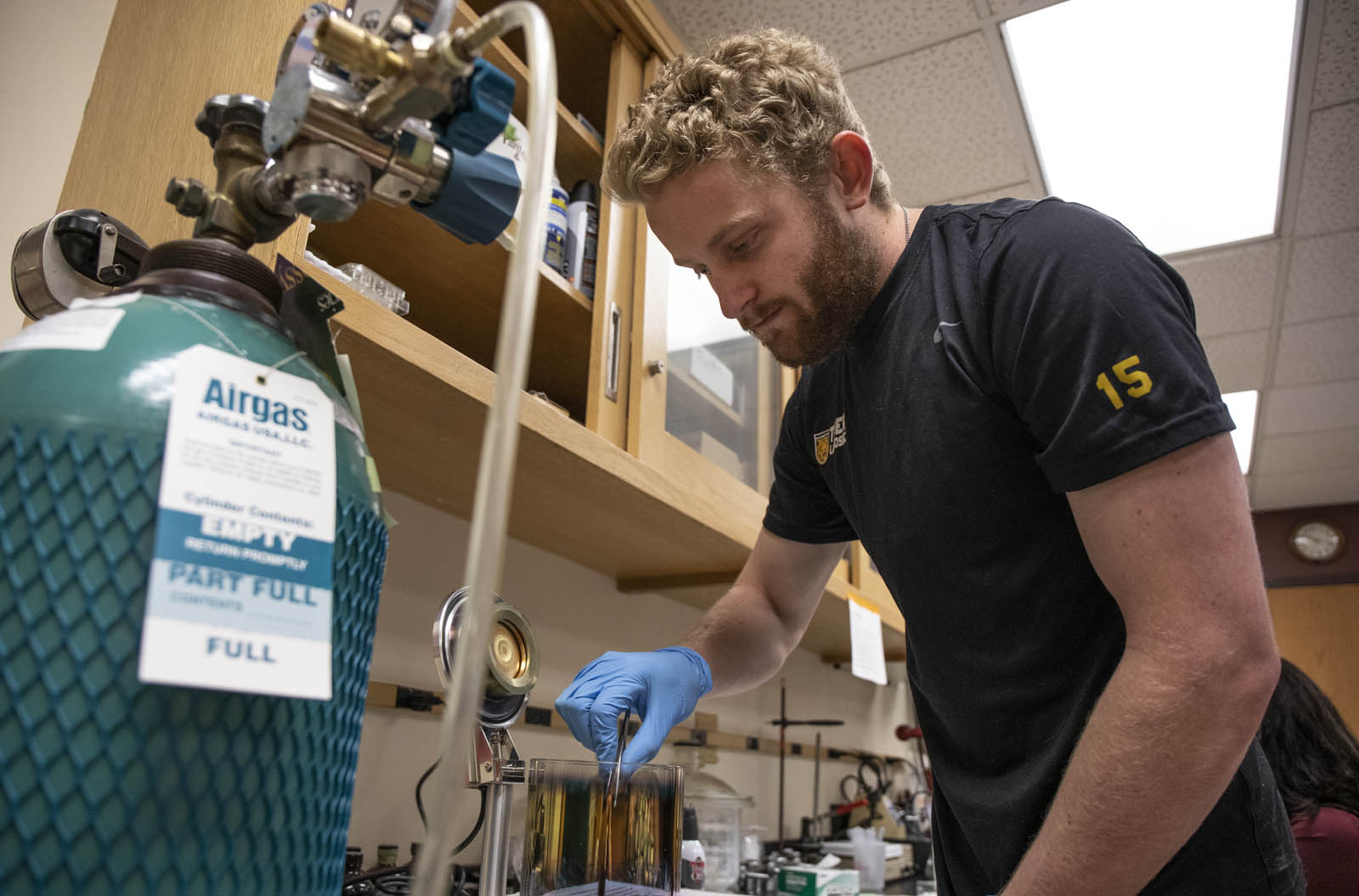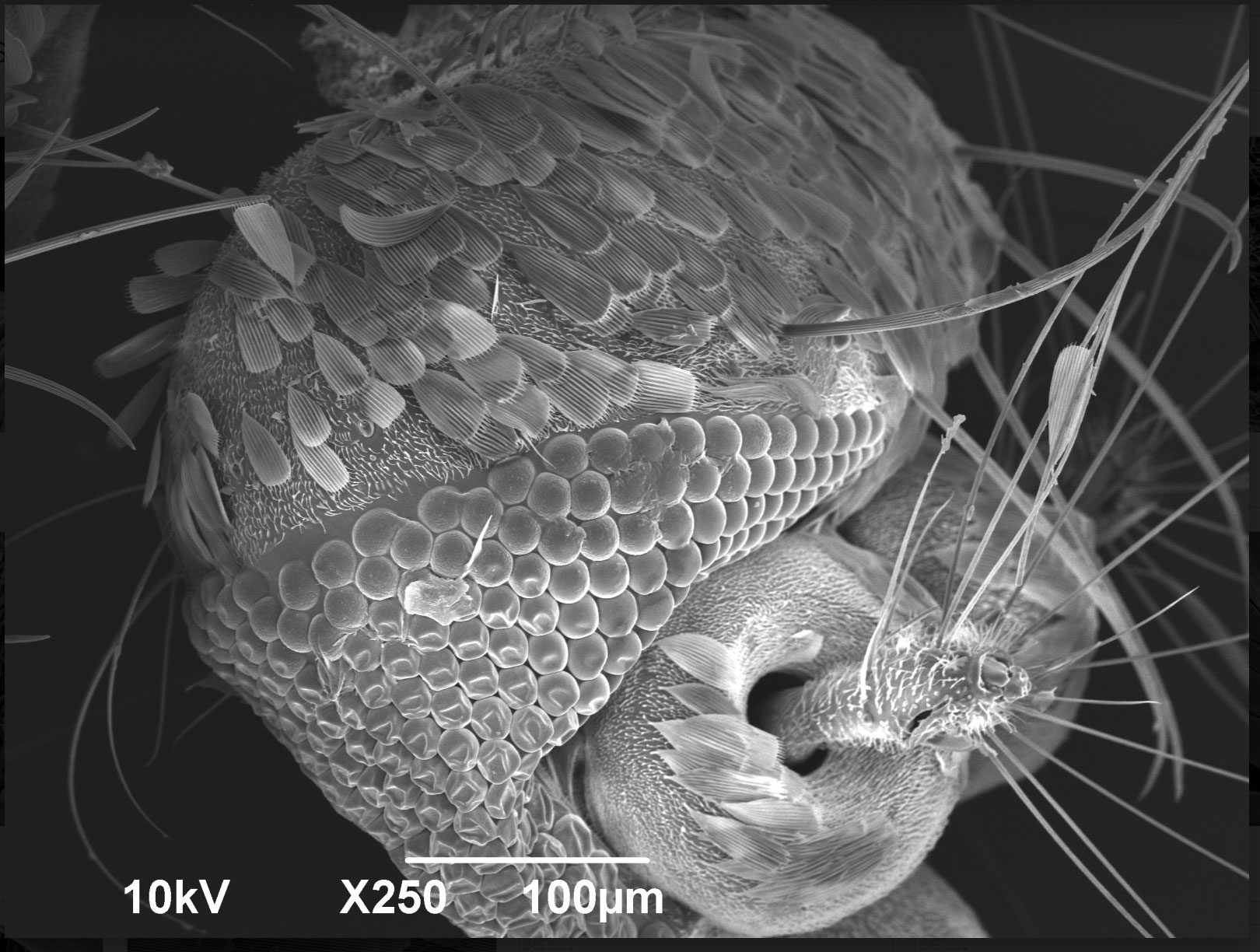By Laurie Laker '12
"There are two frontiers that're primarily advertised in science news, the ocean and space - where we don't know much and what we can see is minimal but another, far less talked about, is the microscopic," says Annemarie Lewis '20, an Organismal Biology & Ecology (OBE) major in Colorado College's Block A class, Scanning Electron Microscopy under the tutelage of Professor Emeritus Ron Hathaway.
The class has been taught by Hathaway since 1983, when the college received its first scanning electron microscope from a private grant to the biology department. Using scanning electron microscopes, students explore the cellular landscapes of specimens ranging from butterfly wings to leeches and practically anything in-between.
The course focuses on giving students a technical grounding in using advanced scientific equipment - a rare opportunity, as scanning electron microscopes are relatively uncommon at undergraduate colleges.
"The opportunity to use this equipment, particularly at undergrad, as well as the teaching and insight from Ron, it's an extraordinary experience," says PJ Offner '21, also an OBE major.
By the end of the class, students present a portfolio of their best images including a detailed and well written legend accompanying each photograph explaining the fine points seen in the image.
"The course never gets repetitive," says Hathaway. "I just never get tired of looking at beautiful things!"
While beauty may not be what springs to mind when thinking of insect samples and the like, the photographs taken with these microscopes are just that; beautiful.
"Something like a mosquito isn't just a simple organism as we see it on the surface, it's beautiful and complex, and you can only truly see that when you look at the close level that we do in this class - it reminds you that there's so much more to the world," adds Lewis.
"This class combines both an art focus and a science focus, it's both the most artistic and the most scientific class I've taken at CC," she adds.
Providing a technical foundation for a huge variety of careers from medicine, research, teaching, electronics, and pharmaceuticals to film work, the course attracts a range of third- and fourth-year students who bring some scientific grounding to the class and an ambition to develop further. Offner, for example, wants to head to medical school after his time at CC and specialize in trauma surgery, whereas Lewis wants to go to graduate school for film.
"I'm a molecular biology major, so this class is really helpful for that, but I've also had an interest in the scanning electron microscope technology since I first heard about it in middle school," says Fiona Han '21.
"I want to move into graduate school after CC and then into the pharmaceutical industry, and this class is a great for that."
Hathaway's familiarity with the technology of the course, having taught it for 36 years, is profound, as are the opportunities he offers students in using the lab beyond the classroom.
"Ron is very nice, really warmhearted - he's always open to research ideas, and [ed. after having the course] lets us use the equipment for that research," says Han.
Hathaway says he takes huge pleasure in seeing his students get excited about the things they're seeing using the microscope.
"It's part of the reason I love using these machines; they open everyone's eyes to the beauty of what we don't see otherwise," he says.


